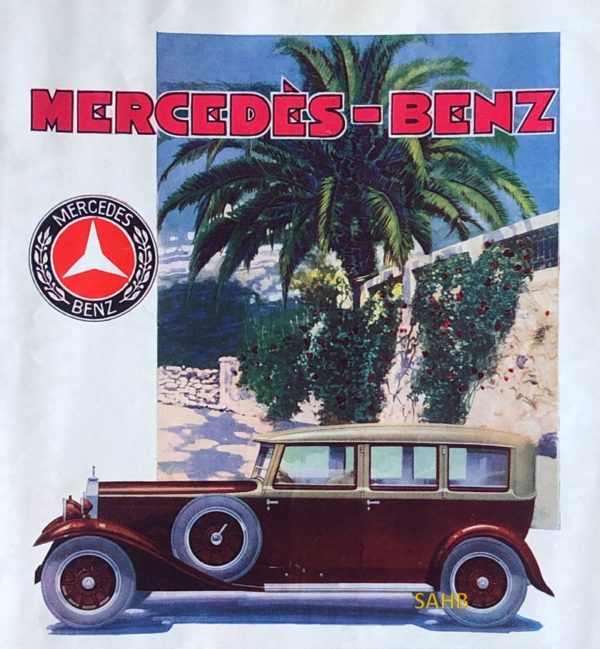
The 18/80 hp Mercedes-Benz Nürburg 460 (W08 series) was the first production 8-cylinder car from Daimler. Launched at the Paris Salon in October 1928, it was aimed at the luxury market – not, in hindsight, the best time to do this with the Depression only a year away. Nevertheless, it remained in production in various forms until the outbreak of World War II, making it the longest-lived Mercedes-Benz model of that era. The model was not named for any sporting pretensions, but for the fact that it had undergone endurance testing at the Nürburgring; a 460 had covered 20,000 kilometres in 13 days of driving.
The car was designed by Ferdinand Porsche, who had transferred to Daimler from sister company Austro-Daimler in 1923. The challenge Porsche faced was to create an effective competitor for the Horch 8 – and the evidence of the result shows that Porsche’s work was rushed. The car was launched with a rather old-fashioned “overslung” (“Hochbett”) chassis with the longitudinal frame members directly above the axles. At that time, new designs were increasingly “underslung” (“Tiefbett”), where the axles sat above the chassis rails. The 1928 Nürburg therefore looked unfashionably tall even on its launch day.
The car was powered by a 4,622cc straight-8 side-valve engine delivering 79 bhp at 3,400 rpm, and a top speed of no more than 62 mph. 4-wheel mechanical brakes were aided by a Bosch-Dewandre vacuum servo.
The car was big, old-fashioned and expensive, and was unsurprisingly not an initial success. Daimler took urgent action: Porsche’s contract as Technical Director was terminated at the end of 1928, and there followed two years of litigation between Porsche and the company. The newly appointed Technical Director Hans Nibel designed a heavily revised version with an underslung chassis that made it easier to step into the car and allowed for a range of lower and more elegant bodies to be fitted. The new version was launched at the 1929 Paris Salon. It is said that it took Daimler six years to sell off their stocks of the 1928 model at discounted prices.
Our Snapshot shows one of the initial overslung cars and, whether from clever manipulation by the illustrator or by talented design by the coachbuilding department, it does look to be a fine car. The image is from an advertisement in the Belgian Englebert Magazine for May-June 1929 and is typical of the excellent colour publicity that Daimler published during the late 1920s.
Despite the 1929 makeover and subsequent improvements the Nürburg only sold 3,824 cars in its 11-year history. Its rival at the top of the luxury pyramid, the Horch 8, sold around 12,000 between 1926 and 1934.
Photo courtesy of The Richard Roberts Archive.







Leave a Comment